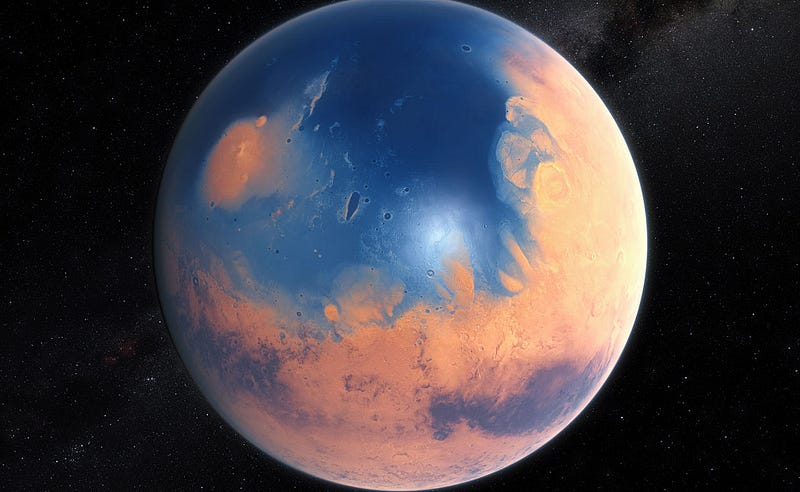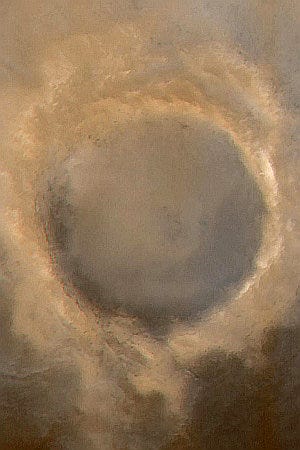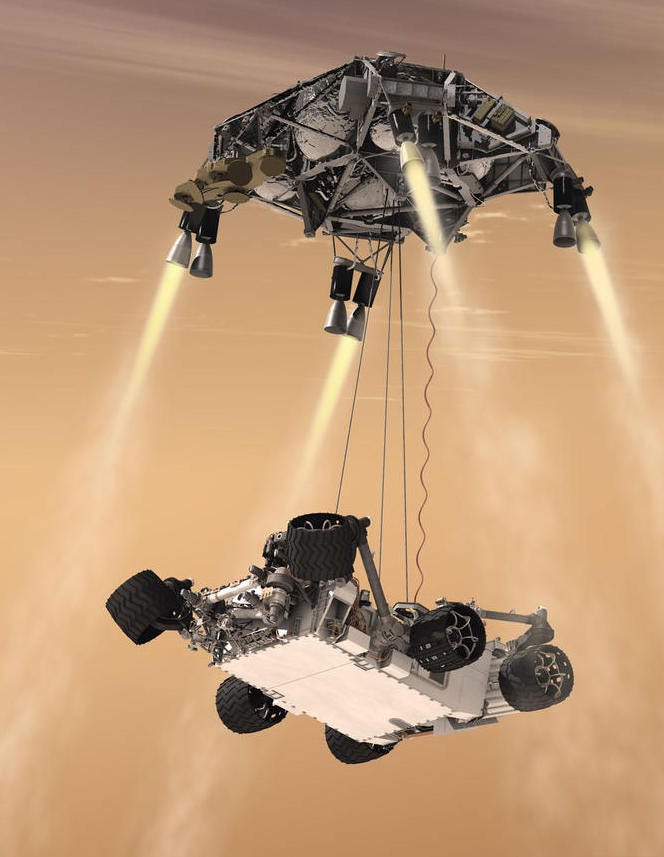The Cataclysmic Event That Shaped Mars: A Mega-Tsunami?
Written on
Chapter 1: The Ancient Oceans of Mars
Mars, once home to extensive oceans of liquid water, has undergone drastic changes, losing its atmosphere and water over billions of years. Recent studies suggest that a colossal crater may provide insights into a cataclysmic marine event that occurred approximately 3.5 billion years ago.
According to new research, shortly after the formation of the planets in our solar system, a gigantic asteroid barreled through the Martian atmosphere, crashing into a shallow ocean on the planet. This impact could have generated a massive wall of water, hundreds of feet high, tinted red by Martian soil, surging across the surface. Upon reaching land, this enormous wave could have inundated an area larger than the United States. Initially proposed in 2016, this hypothesis has gained traction with new evidence pointing to an asteroid measuring 19 kilometers (12 miles) in length and 14 kilometers (9 miles) in width as the probable cause of this ancient disaster.

Chapter 2: Geological Evidence of the Cataclysm
Features on the Martian landscape, such as large boulders etched with channels, indicate that they may have formed as water receded following a catastrophic flood. These rock deposits, located in the northwestern region of Arabia Terra, exhibit shapes resembling arrows, signifying how water withdrew from the area.
Francois Costard, an astronomer with the French National Centre for Scientific Research, hypothesized that an asteroid impact led to this mega-tsunami. His team examined ten potential craters that could serve as evidence of such an event.

Among these, the Lomonosov crater has been identified as the epicenter of the ancient impact. This crater spans 120 kilometers (75 miles) and features a distinctive shape, including a southern outlet likely formed by fast-moving water, which caught researchers' attention. The American Geophysical Union notes, "We attribute its broad and shallow rim, in part, to an impact into a shallow ocean as well as its subsequent erosion from the collapsing transient water cavity."
The crater's age—approximately three billion years—aligns with geological studies of the area, suggesting that its rim resembles marine craters found on Earth and corresponds to the estimated depth of the Martian ocean during that time. Calculations indicate that the impact was significant enough to trigger the mega-tsunami.
Chapter 3: Future Mars Exploration
As Carl Sagan once expressed, "We come, after all, from hunter-gatherers, and for 99.9% of our tenure on Earth we’ve been wanderers. And, the next place to wander to is Mars." The hypothesis that the Lomonosov impact was responsible for this massive flood is still under investigation. It's possible that volcanic activity or marsquakes could have also contributed to the Martian tsunami.
During the time of the tsunami, much of Mars's water had retreated into frozen reservoirs beneath its surface. Massive landslides were reshaping the planet as this water began to freeze below the Martian soil.

Further investigations are necessary to uncover the true cause of this mega-tsunami on Mars. Currently, the Lomonosov crater provides a compelling narrative about the planet's past.
Over the coming years, Mars will see a variety of robotic missions, including NASA's Mars 2020 rover, a science laboratory by the European Space Agency named after biologist Rosalind Franklin, and the Hope Mars Mission from the United Arab Emirates. These spacecraft aim to explore ancient life on Mars and may uncover vital information about this intriguing region.
Did you enjoy this article? Subscribe to The Cosmic Companion Newsletter!